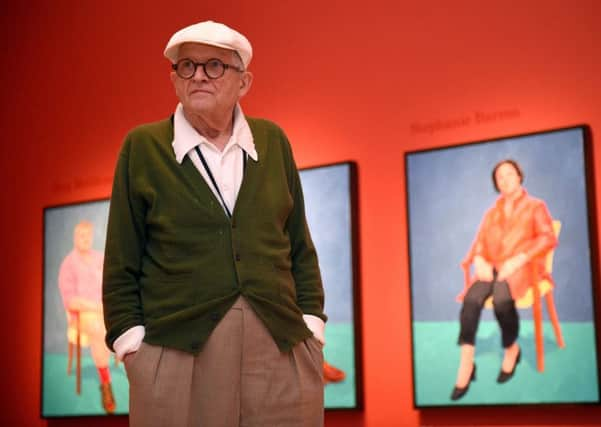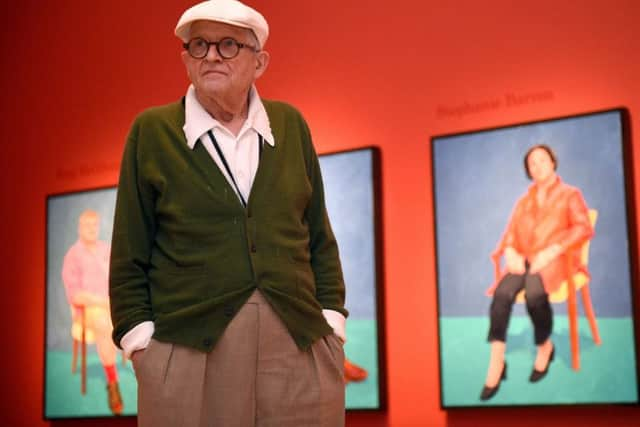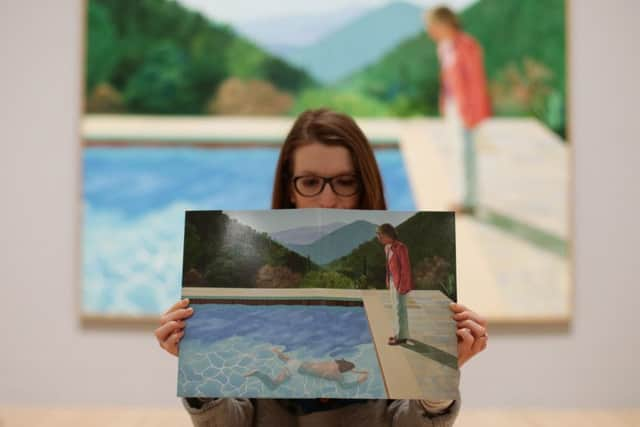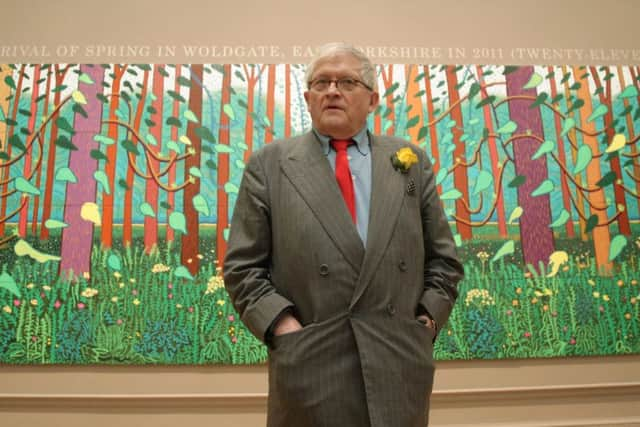Tate and smile: A new way of seeing Hockney


No-one but David Hockney would have chosen a view from his bedroom window in Bridlington, or Polaroids of his mother on a day trip to Bolton Abbey, to represent part of a lifelong body of work. But Hockney never was a conformist.
This was never more apparent than in 1989, when his choice of medium for a stylized painting of his home city was the front cover of the Bradford telephone directory.
Advertisement
Hide AdAdvertisement
Hide Ad“He is a force of nature,” said Andrew Wilson at the Tate Britain, who is curating Hockney’s first large retrospective in Britain since 1988.


The three-decade gap is “fairly staggering for an artist of his standing and popularity,” Mr Wilson said.
The exhibition, encompassing 250 pieces in 13 rooms and bigger than almost any other at the Tate, is notable for Hockey’s fascination with technology and his love of Yorkshire.
His impressions of the sweeping Yorkshire Wolds and the East Riding backwaters of Kilham, Garrowby Hill and Thwing, share a room with studies of the Grand Canyon and Colorado River.
Advertisement
Hide AdAdvertisement
Hide AdHe used an iPad to produce the views from the window of the house he owned in Bridlington until 15 months ago. His sister, Margaret, lives nearby, and said in 2014 that it was she who had taught him to use a computer.


But the retrospective is a timely reminder that Hockney had always been an innovator. In the 1980s, he famously embraced the fax machine, turning out art by the roll, and calling it “the enemy of totalitarianism, the return of handwritten letters”.
The Tate has curated the exhibition from public and private collections. It includes a room dedicated to his celebrated series of double portraits, including Mr And Mrs Clark And Percy (the fashion designer Ossie Clark, his bride, textile designer Celia Birtwell, and their cat) as well as the 1968 painting of the novelist Christopher Isherwood and his partner, Don Bachardy, which has not been displayed for more than 20 years.
Mr Wilson said: “We all think we know these images, paintings and pictures and know them really well but actually one of the excitements of making the exhibition is that painting has been in a private collection for years and actually seeing it is so staggeringly different from seeing a photograph of the painting reproduced in a book.
Advertisement
Hide AdAdvertisement
Hide Ad“That chance to have those experiences is going to change how people understand David Hockney’s work.”


Hockney, who will be 80 in July, is an unlikely cult figure. The fourth of five children - his brother, Paul, was Lord Mayor of Bradford during the Silver Jubilee year of 1977 - he went from the city’s College of Art to London, where his introduction in Peter Blake’s Young Contemporaries heralded the arrival of British pop art.
In the Sixites, his first visit to California - to where he has once again retreated - inspired perhaps his signature works, a series of paintings of swimming pools in the then-new medium of acrylics.
Many, as a result, consider him a Los Angeles artist, but Mr Wilson said: “Especially after the period he spent in Yorkshire between 2006 and 2013, there is a renewed attachment, that is such a staggeringly important aspect of his work.”